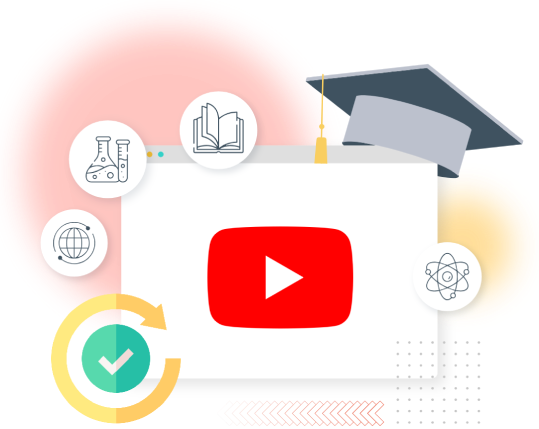
Think about your last company training session. Was the room half-empty? Did you notice people checking their phones or daydreaming? If so, you're not alone. Most companies are throwing money away on training that just doesn't work.
They're flying people across cities, printing thick manuals, and booking expensive trainers, yet employees aren't learning what they need to know. Even worse, most people forget almost everything they learned within a day.
This broken training system hurts everyone. Employees feel stuck and frustrated because they can't learn new skills, and companies lose money when workers can't do their jobs well.
Customers get annoyed when they deal with poorly trained staff. Meanwhile, other companies that have switched to modern online training are moving ahead, attracting better workers, and growing faster. Can you really afford to keep doing things the old way?
There's a better way: eLearning content development that people actually want to take. By turning boring presentations into interesting online lessons, companies are saving money and helping employees learn better.
This guide will show you how to create training that:
We'll skip the fancy words and complex theories. Instead, you'll get clear, proven steps to create training that works in the real world. Let's dive in.

The nature of corporate training has shifted dramatically with the rise of eLearning content development. This transformation goes beyond simply moving classroom materials online. Modern online education requires a thoughtful approach to content creation, combining technology with proven learning methods.
Through careful instructional design, organizations can create training programs that engage learners and produce measurable results.
Employees typically spend 40% to 60% less time learning new skills with eLearning than in traditional classroom settings, making it a highly efficient option for organizations.
Traditional classroom training faces numerous limitations in today's global workplace. The advent of eLearning content development addresses these challenges by offering flexible, scalable solutions. When developed with solid instructional design principles, online education provides consistent quality across all levels of an organization.
Successful online training relies on key elements that ensure engagement, effectiveness, and learner satisfaction. Let’s explore the core elements that encompass an engaging eLearning module.
Every successful eLearning content development project begins with clear and measurable objectives. These objectives serve as a roadmap, outlining what learners should know or be able to do by the end of the training. Setting these goals ensures that every component of the course has a purpose and aligns with the desired outcomes.
For instance, a customer service training program might aim to improve communication skills and complaint resolution techniques. Defining such objectives helps in creating targeted content that meets learner and organizational expectations.
A well-thought-out strategy is equally critical in achieving these objectives. It involves understanding the learners’ needs, their current skill levels, and the most effective way to bridge the gap between existing knowledge and desired skills.
For example, an onboarding program for a new software might prioritize hands-on practice and step-by-step tutorials over lengthy theoretical lessons. By aligning the strategy with specific goals and learner profiles, organizations can design engaging and impactful courses.
Organizing content effectively is vital for creating a seamless learning experience. A well-structured course builds on foundational knowledge, gradually introducing more complex ideas.
For instance, a course on data analytics might start with basic statistical concepts before moving on to advanced visualization techniques. This logical progression allows learners to connect new information with what they already know, making it easier to retain and apply.
Breaking content into manageable chunks or modules also enhances learning. Instead of overwhelming learners with a dense block of information, dividing the course into short, focused sections helps maintain their attention.
For example, a compliance training program could be organized into modules covering specific regulations, case studies, and practical applications. Clear headings, summaries, and transitions between topics make the content easier to follow and understand.
Interactivity is the cornerstone of effective online training. Incorporating quizzes, polls, and scenario-based activities transforms passive learners into active participants.
For example, a sales training course might include role-playing scenarios where learners practice handling customer objections. This hands-on approach reinforces theoretical knowledge and builds confidence in real-world applications.
Interactive components also cater to different learning styles. Visual learners might benefit from drag-and-drop exercises or interactive timelines, while auditory learners could engage with podcasts or voice-over explanations. Gamified elements, such as earning badges or completing challenges, can make learning enjoyable and encourage participation.
For instance, an environmental awareness program could feature a quiz game where learners identify energy-saving practices, adding fun and relevance to the training.
Visual design plays a crucial role in maintaining learner engagement and supporting comprehension. Clean layouts, consistent fonts, and a harmonious color scheme create a professional appearance that doesn’t distract from the content.
For instance, diagrams and infographics to explain complex topics like supply chain management make the information more digestible and visually appealing. Thoughtful use of visuals can also enhance understanding.
A medical training program, for example, might use labeled diagrams or animations to explain human anatomy. Similarly, video demonstrations in a cooking course can illustrate techniques more effectively than text alone. The key is to ensure that visual elements complement the content rather than overshadowing it, creating a balanced and learner-friendly design.
Clear, concise, and engaging writing is the backbone of effective online courses. The language should be simple and direct, avoiding unnecessary complexity.
For instance, a cybersecurity training program might explain phishing scams using everyday scenarios, making the concept relatable and easier to grasp. Analogies, examples, and storytelling can make even technical subjects more interesting and accessible.
Consistency in tone and style is also important. A formal yet approachable tone works best for professional courses, while creative courses might adopt a more conversational style. The goal is to communicate information effectively while keeping learners motivated.
For example, a leadership course could use motivational anecdotes from successful leaders to inspire and guide learners through the content.
Assessment is critical for measuring progress and reinforcing learning. Effective assessments go beyond simple quizzes and include practical exercises, peer reviews, and scenario-based tasks.
For instance, a digital marketing course might require learners to create a mock campaign, allowing them to apply their knowledge in a realistic setting. These assessments not only test understanding but also prepare learners for real-world challenges.
Feedback is another essential component of evaluation. Providing detailed feedback helps learners understand their strengths and areas for improvement.
For example, personalized feedback on pronunciation or grammar errors can significantly enhance the learning experience in a language learning course. Regular assessments combined with constructive feedback ensure that learners are genuinely mastering the skills and concepts being taught.

eLearning content development involves a systematic process to ensure the final product is engaging, effective, and aligned with organizational goals. Each stage is vital in delivering a seamless learning experience, from initial planning to quality assurance.
Every successful eLearning project starts with a strong foundation of planning and analysis. This phase involves understanding the learners—what they know, what they need to learn, and how they prefer to learn.
For example, an organization developing a training program for new software might conduct surveys to gauge employees’ familiarity with the tool. Based on this, the course could be tailored to include beginner tutorials or advanced troubleshooting techniques.
Additionally, this phase requires aligning the course with organizational objectives.
For instance, a retail company creating an eLearning program for its sales team might focus on improving product knowledge and customer service skills to boost sales performance. By identifying these goals upfront, the planning stage ensures that every aspect of the course serves a clear purpose.
The heart of eLearning content development lies in the content. This phase involves transforming raw information into interactive and engaging learning materials.
For example, a course could include animated scenarios where learners identify hazards in a virtual workspace instead of presenting a dry list of workplace safety rules. This approach makes learning more relatable and memorable.
Diverse content formats—videos, infographics, quizzes, and case studies—cater to different learning styles. In a course on leadership skills, short videos featuring real leaders sharing their experiences can inspire learners, while interactive decision-making exercises allow them to practice applying these skills.
Selecting the right technology platform is critical to the success of eLearning. The chosen platform must support the course content, be user-friendly, and work seamlessly across devices.
For instance, a corporate training program might leverage a Learning Management System (LMS) like Moodle or TalentLMS, enabling employees to access courses anytime, anywhere. Ensuring mobile compatibility is particularly important in today’s mobile-driven world.
The technology also needs to facilitate interactive elements. For example, in a healthcare training program, augmented reality (AR) simulations could be used to teach complex procedures, such as administering an IV.
Rigid quality assurance (QA) and testing are essential before rolling out the course to identify and fix any issues. This includes checking for broken links, ensuring multimedia elements load correctly, and verifying the accuracy of the content.
For example, in a financial compliance training program, any errors in regulations or policies could lead to misunderstandings with serious consequences. QA ensures such inaccuracies are caught and corrected before launch.
Testing also involves gathering feedback from a small group of users. For example, a pilot group of employees might be asked to complete a new cybersecurity training module. Their feedback on navigation, content clarity, and overall experience helps refine the course.

Engagement is the cornerstone of effective eLearning content development. When learners are actively involved, they retain information better and feel more connected to the learning process.
Storytelling is a powerful tool in eLearning because it adds relevance and emotion to the content. Instead of presenting dry facts, creating relatable scenarios can make concepts easier to understand and apply.
For example, in a workplace ethics course, a story about a manager navigating a conflict of interest can bring the topic to life. Learners are more likely to remember and engage with content when they see how it applies in real-world contexts.
Context also enhances learning by bridging the gap between theory and practice. For instance, a training program for healthcare professionals could use case studies to demonstrate decision-making in patient care.
Multimedia elements like videos, animations, and audio clips make learning dynamic and engaging. However, it’s important to use these tools thoughtfully.
For example, a course on public speaking could include videos of effective speeches, breaking down techniques like body language and tone. Adding subtitles to videos ensures accessibility and caters to diverse learning preferences.
Interactive multimedia, such as clickable diagrams or virtual simulations, further enhances engagement. In a manufacturing safety course, a simulation where learners identify hazards in a virtual factory reinforces theoretical knowledge and provides a safe space to practice decision-making.
Learning isn’t complete without opportunities to apply new skills. Interactive exercises, such as role-playing scenarios or hands-on projects, allow learners to practice in a controlled environment.
For instance, a sales training program might include role-playing, in which learners respond to customer objections. This activity helps them internalize techniques and gain confidence.
Assessments that mimic real-world tasks are particularly effective. For example, in a course on graphic design, learners could be tasked with creating a promotional poster using the provided specifications. This would reinforce their skills and give them a tangible piece of work to showcase. Practical application bridges the gap between theory and execution, ensuring learners are prepared for real-world challenges.

The success of any eLearning content development program depends on its ability to engage learners and drive meaningful outcomes. This requires robust participation tracking, learning evaluation, and real-world impact assessment.
Tracking participation provides valuable insights into learner engagement. Simple metrics like course completion rates and time spent on modules can reveal patterns.
For example, if many learners drop out during a specific module in a customer service training course, it may indicate that the content is too complex or unengaging. This data allows for targeted improvements.
Interactive elements like polls and discussion forums also encourage participation. For instance, a leadership training program might include a forum where learners share their thoughts on real-world leadership challenges. Such activities measure engagement and create a sense of community among learners.
Assessing learning outcomes goes beyond tracking participation—it measures what learners have gained. Quizzes, scenario-based assessments, and peer reviews are useful tools.
For example, a course on data analysis could include a project where learners analyze a dataset and present their findings. This not only tests their understanding but also mirrors real-world tasks.
Pre- and post-assessments are another effective way to gauge progress. In a language learning course, evaluating a learner’s vocabulary and grammar skills before and after the training provides clear evidence of knowledge gain. Such evaluations help organizations determine whether their investment in training is yielding the desired results.
Ultimately, the success of eLearning content development is reflected in improved workplace performance. The content must be designed to meet practical needs.
For instance, an IT support training program might focus on troubleshooting common technical issues. Monitoring metrics like reduced ticket resolution time or higher customer satisfaction scores can indicate the impact of the training.
Real-world feedback from learners and supervisors also plays a vital role. For example, employees might report feeling more organized and productive after a time management course, and supervisors, in turn, might notice improved team efficiency.
Let’s look into the future trends and innovations that will shape eLearning content development.

The mobile-first learning design is transforming eLearning by prioritizing accessibility and engagement on mobile devices. This approach incorporates microlearning modules with 2-5 minute bite-sized content, allowing learners to quickly absorb information on the go.
Courses are built with responsive design, ensuring compatibility across all devices. Mobile-friendly assessments, such as quick quizzes, enhance interactivity, while social learning features, including discussion boards and chat, foster collaboration. Additionally, push notifications act as timely reminders, helping learners stay on track with their educational goals.
Benefits for organizations:
AI is transforming learner engagement with eLearning content by creating a more personalized and adaptive experience. It offers smart content recommendations tailored to individual learning patterns, while automated course pathways adjust based on performance to guide learners more effectively.
Natural language chatbots provide instant support, enhancing accessibility and responsiveness. Predictive analytics are key in identifying struggling learners early, enabling timely intervention. Additionally, AI generates practice questions and summaries, making study sessions more efficient and reinforcing knowledge retention.
AI’s Impact on Learning:
New technologies are enhancing learning experiences by making them more immersive and interactive. Virtual Reality (VR) enables scenario-based training, allowing learners to practice real-world situations safely.
Augmented Reality (AR) provides on-the-spot performance support, bringing resources directly into the user's environment. With 360-degree videos, learners can explore settings in an environmental context, deepening their understanding.
Mixed reality combines physical and digital elements to develop complex skills, while interactive simulations offer hands-on practice, improving engagement and retention. Together, these tools are revolutionizing how learners connect with content.
Business advantages:
Technological advances are reshaping eLearning by incorporating more dynamic and immersive elements. Gamification now features sophisticated reward systems that motivate learners and reinforce progress.
Learning in the Metaverse opens up new possibilities for virtual collaboration and exploration in digital environments. Voice-activated learning interfaces enhance accessibility, making hands-free interaction seamless and efficient.
Blockchain technology ensures secure, verifiable credentials, adding credibility to online certifications. Extended Reality (XR) training environments combine VR, AR, and mixed reality, creating versatile, engaging spaces for hands-on skill development and experiential learning.
Implementation Strategy:
Key Success Factors:
Looking to create online training that actually works? Lexiconn, the best content writing agency, can help. We turn complex training materials into interesting online lessons that engage learners and help them remember what they learn.
Our team knows exactly how to create online courses that get results. We write in a way that's easy to understand, using stories and examples that make learning stick. Whether you need complete training programs or short learning modules, we ensure your content is helpful and interesting.
Ready to improve your online training? Let’s collaborate to create learning content your employees want to complete. Visit us or email us at [email protected]



I have read and accept the Privacy Policy
Read More